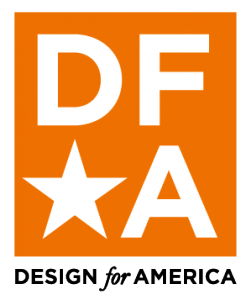This week in class we had a group of guest speakers from an RSO on campus called Design For America (DFA) come in and lead a workshop that focused a lot on the idea that we have been emphasizing all semester of having a making mindset. In this workshop, we were given multiple situations and issues and then taken through some steps to come with viable solutions based off of a lot of questions we were coming up with that describes the main problem we want to solve. For instance, my team took on a problem that a visually impaired mother had about not being able to see or locate her children at times. We then came up with the question “How can we help visually impaired parents locate their children in groups of many children or unknown locations?” to represent the problem we are trying to solve more specifically to hone in on potential solutions. After coming up with a focus question to base our ideas off, we began to bounce off each teammates ideas until we finally came up with an idea to which we then had to create a mock prototype out of supplies at hand such as play-doh, pipe cleaners, magnets and some others. From this workshop, my team came up with the idea of a sort of locator jewelry that can be worn by the parent that is visually impaired as well as his/her children that can use some sort of magnetic technology or location system that will sort of pull or put pressure in the direction of the child. We also thought of some potential ear buds that can also be synced to the device to offer audio directions to the child as well. We then used pipe cleaners to form a bracelet to be worn by the parent and a necklace for the child to wear and used magnets as a design for the necklace and bracelet as well as for its attractive properties. Lastly, we coated the magnets in blue play-doh to make them appear like actual jewelry pieces.
This was a very interesting workshop that helped give us an idea of things we can do to help us come up with an idea for our semester project. Focusing more on a problem to solve then branching out to potential solutions we found is very efficient for our team and got us thinking of possible project ideas. It also helped me learn a lot about DFA, which is a very interesting RSO that I wish I would have known about earlier in my college career and cannot wait to hear what great projects they work on in the future.

